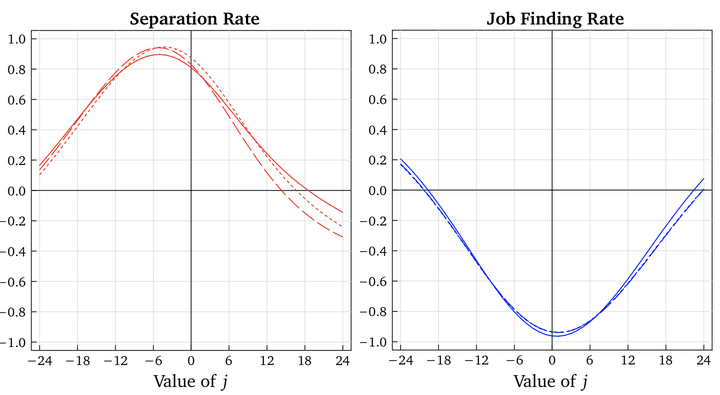Understanding Unemployment Dynamics: The Role of Time Aggregation
 Cross-correlations of separation and job finding hazard rates with unemployment rate
Cross-correlations of separation and job finding hazard rates with unemployment rate
Abstract
This paper uses weekly data from the Survey of Income and Program Participation (SIPP) to estimate the role of time aggregation in measuring gross labor force flows and unemployment dynamics. Time aggregation is substantial: gross flows estimated from monthly data understate the true number of transitions by 15–24 percent. Time aggregation in both separations to unemployment and accessions from unemployment comoves positively with the business cycle. The effect from time aggregation on separations is roughly offset by its effect on accessions, however, creating no meaningful cyclical bias in measured gross flows or hazard rates. Contrary to claims by Hall (2006) and Shimer (2007), separation hazard rates calculated from the SIPP and the Current Population Survey are strongly countercyclical and remain so after adjusting for time aggregation. In addition, the separation hazard rate contributes fully one-half of the cyclical variance of the steady-state unemployment rate after adjusting for time aggregation.